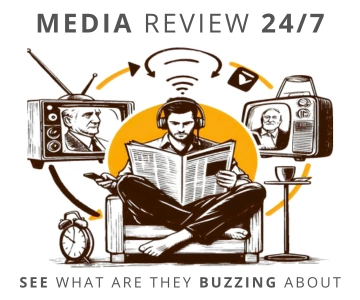 illustration: DALL-E
illustration: DALL-EAccording to representatives of ZTE Poland, the producers of nubia smartphones whose two new models have just premiered in Poland, this segment of the domestic market remains largely untapped, and so far, it has been dominated mainly by advanced and expensive devices. Artificial intelligence plays a major role in enhancing gaming hardware.
"There are about 3 billion mobile gamers worldwide, with half of them in Asia and the Pacific", says Adam Bialic, marketing manager at ZTE Poland and nubia, in an interview with Newseria agency. "A large share is North and South America, while Europe still has a lot of catching up to do".
According to the Q1 2025 report by Xsolla, the global mobile gaming market is expected to grow at an increasingly rapid pace, with a compound annual growth rate (CAGR) at 11.3 percent. In 2025 alone, a 9.9 percent year-on-year increase is forecast.
Trends in player engagement are shifting, with Generation Z and Alpha taking the lead. These gamers are reshaping the gaming sector. From an early age, they have used digital technologies, which makes them more likely to choose interactive content created by players that includes social media connectivity. Cloud gaming is expected to generate 25.3 billion dollars in revenue worldwide by 2029.
Trends in the Polish market
- According to PMR data, in 2023 mobile titles accounted for 36 percent of all video games in Poland, including those available via social media platforms and web browsers.
- The same share applied to desktop games,
- while consoles accounted for 28 percent.
Statista analysts indicate that the Polish market is seeing a rise in innovative titles, reflecting a growing game developer community and increasing consumer engagement.
- Forecasts suggest that by 2030 the number of mobile game users in Poland will reach 7.1 million,
- and their market share will rise to 18.4 percent, up from 15.6 percent this year.
"In Poland, the mobile gaming market is still in its infancy. Of course, there are quite a lot of mobile gamers in Poland. This group expands the overall gamer population, as we also have people interested in games on desktop computers, various consoles, so there are several platforms, and today the smartphone is one of them. The group that identifies as smartphone game users is the largest of all, about 40 percent", says Adam Bialic. "However, it is important to remember that this diversifies the overall number of gamers. Those who play major titles on consoles or computers are not necessarily the same ones who also play on smartphones".
Meanwhile, according to the ZTE Poland representative, despite the rising number of gamers, the market for gaming smartphones is still not sufficiently developed, although it holds great potential.
COMMERCIAL BREAK
New articles in section Media industry
Advertising market 2025. Poland, Europe and the World
Marcin Grządka
The global advertising market is growing by 8.8% in 2025 and will reach a value of 1.14 trillion dollars. The industry result in Europe records slightly lower dynamics, at the level of 5.8%. In this comparison, Poland performs clearly above the average. We will record an increase of 8.9% this year and a value of 18.56 billion PLN - estimates WPP Media in the annual report "This Year Next Year".
The print media market 2025. Three global trends
Krzysztof Fiedorek
The market value is 359.53 billion dollars, yet the erosion is visible to the naked eye. The decline for newspapers will amount to -2.3 percent. Despite this, print retains strength: it generates 76 percent of subscription revenues and enjoys 82 percent consumer trust. The future of the industry is defined by hybrid strategies and niche specialization.
Journalism in the age of AI. Why people prefer humans over machines
Krzysztof Fiedorek
Only 12% of people accept news created solely by AI, while 62% prefer those written by humans. At the same time, only 19% notice labels indicating the use of artificial intelligence, while younger audiences ask AI to explain the content to them. These are the findings of the Reuters Institute report on artificial intelligence in media.
See articles on a similar topic:
New Technologies in Journalism. PressInstitute Study
BARD
Nearly 39% of journalists use their smartphone or tablet camera to record videos, while over 26% use the built-in camera to take photos that they later publish, according to the "Journalists and New Technologies" study by PressInstitute.
Print Advertising in Poland. Analysis by Polskie Badania Czytelnictwa
BARD
Analysts at Polskie Badania Czytelnictwa (Polish Readership Surveys) have compiled statistical data highlighting the reach, engagement, and opinions regarding print advertising campaigns. These insights are valuable for marketers aiming to plan and optimize advertising budgets.
Media in Poland 2022. How Poles Watch, Listen, Read, and Surf the Web
Krzysztof Fiedorek
Nearly two million Poles have access to a TV but do not watch television. For radio, the analogous group amounts to 8% of radio owners. Two-thirds of Poles reach for printed press, even occasionally, while the number of mobile internet users exceeds desktop users by nearly three million.
Radio Fanatics. Who Listens for One-Third of the Day?
Bartłomiej Dwornik
One in five listeners now spends over 8 hours daily listening to the radio, according to data from the Radio Track study. Since the beginning of the year, the number of these avid listeners has grown by 300,000.





























